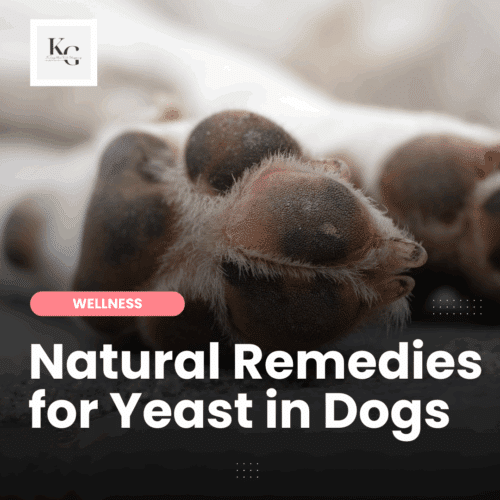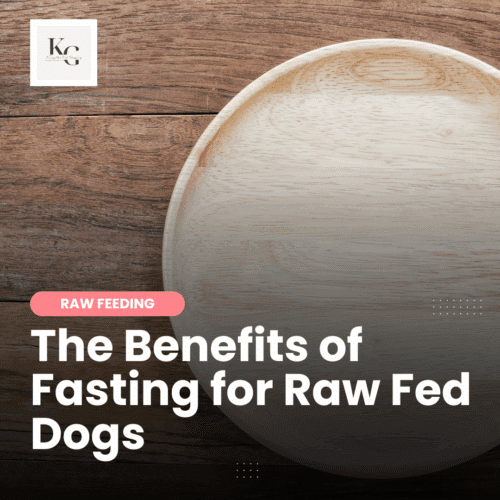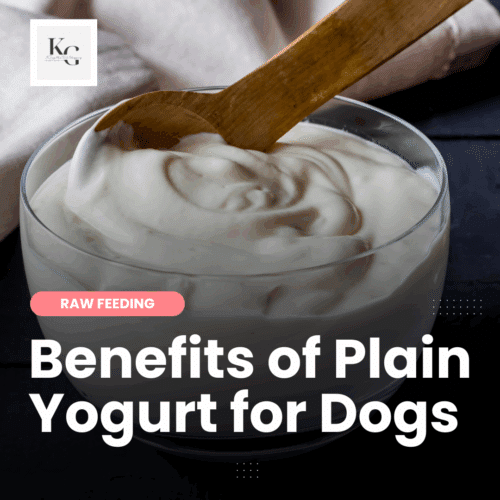Keep the Tail Wagging is supported by pet parents. I occasionally earn a commission (at no additional cost to you) when you click through an affiliate link to one of my favorite products. Thank you for your support. Read More
I recently passed the Professional Canine Nutrition course offered by the Feed Real Institute. I'm now a Certified Professional Canine Nutritionist (CPCN), a goal I've had for a while because I thought the knowledge would add more credibility to my blog while teaching me the science behind raw feeding. If you're looking for a certification course or have been on the fence about taking this course, this article will shed light on what you can expect.
Disclaimer: I was given course entrance in exchange for my honest thoughts on my experience.
Importance of Proper Canine Nutrition
Canine nutrition is important because it directly impacts a dog's overall health and well-being. A balanced and appropriate diet provides essential nutrients for growth, energy, immune function, dental health, and organ health. It also helps maintain a healthy weight, promotes digestion, supports healthy skin and coat, and can even prevent certain health conditions.
Basically, proper nutrition is crucial for dogs to live a long, happy, and active life.
However, there is disagreement in the pet community and pet industry about what “property canine nutrition” looks like, with most pet parents feeding kibble and canned food and a growing segment feeding fresh food (raw, cooked, freeze-dried, dehydrated, or air-dried).
Overview of the Professional Canine Nutrition Certification
The Feed Real Institute's Professional Canine Nutrition course addresses veterinarians' two main concerns about feeding a raw diet – balance and bacteria. This curse equips the veterinary team with knowledge about raw feeding, allowing them to support their clients that would like to feed raw or have already adopted the diet for their dogs.
The Feed Real Institute also offers a course for pet parents. The Real Dog Food Nutrition Course provides pet parents with a foundation for canine nutrition that includes detailed information supported by science that explains why feeding fresh food is superior to feeding kibble. This course also alleviates any fear or concerns about adopting a raw food diet.
Benefits of the Professional Canine Nutrition Certification
There are three reasons I wanted to become a CPCN:
- Enhancing my knowledge of canine nutrition
- Establishing credibility in the pet industry
- Assisting dog owners in making informed dietary choices
Enhancing My Knowledge of Canine Nutrition
While I understand the benefits of raw feeding and have successfully fed my dogs a nutritious raw diet for over ten years, I lack the scientific details behind why raw feeding is so beneficial. This course covers the macro and micronutrients in my dogs' diet, the common nutrients in a meal, and how they work together and support our dogs' overall health.
The Feed Real dog owner and professional courses also cover the various raw feeding models, how to assemble a meal, and how to accommodate an aging dog.
Establishing Credibility in the Pet Industry
One obstacle I come up against as a content creator is my lack of qualifications. A degree in business isn't enough when sharing information about canine nutrition and raw feeding. By becoming a CPCN, I can show that I have the education to support what I share in my blog articles and on social media. And earning my certification allows me to create accurate content for pet parents.
Assisting Dog Owners in Making Informed Dietary Choices
While I do not intend to offer nutritional consultations, I will use what I learned in my articles and the content I create for social media. I've chosen not to offer consultations because I lack the veterinarian component to help address any health concerns, as I believe that nutrition and health go hand in hand.
The Curriculum
The following curriculum for the Professional Canine Nutrition course is from the Feed Real website:
- The components of fresh food: muscle meat (protein), raw meaty bones (calcium), seafood (fats), fiber, liver/other secreting organs.
- How to balance essential fats (Omega-3s and Omega-6s)
- Why and how to meet AAFCO and NRC standards while feeding a raw diet
- How to put your raw dog food bowl together, including supplements and whole food alternatives
- How to combat the main two concerns about raw feeding: bacteria, and nutritional imbalances
- The truth about carbohydrates and protein for the aging dog
- Overall costs of raw feeding
- Monitoring for nutrient imbalances, clinical signs of vitamin and mineral deficiencies, and clinical health markers to follow closely.
- Interactions between vitamins, minerals, and medications
- Debunking myths such as raw feeding can cause aggression in dogs and that all bones are bad for dogs!
Obtaining Certification
Eligibility Requirements
The Professional Canine Nutrition course is available to anyone interested in canine nutrition; no high school or college degree is required to take this course. However, I recommend taking the Real Dog Food Nutrition Course first if you're not a veterinarian, vet tech, medical professional, or nutritionist.
Registration Fees
The Real Dog Food Nutrition Course costs $149; the Professional Canine Nutrition Course costs $299. Students have access to the course for one year, including updates.
Study Materials and Resources
The Professional Canine Nutrition Course has seven segments, with an exam at the end of each segment. I appreciated the list of resources to support what I learned, showing that the course material was created based on facts and science, not someone's opinion.
There is a final exam at the end of the course. The segment exams and final can be taken repeatedly; each time you take the exam, you'll receive a different set of questions.
Examination Format and Pass Criteria
The exams are multiple-choice, and they must be completed within a period. If I recall correctly, the segment exams have approximately 20 questions to be completed in 20 minutes. The final exam has twice the number of questions and must be completed in 60 minutes.
I completed the final exam in less than 30 minutes; I completed all the exams on the first try, with one exception. I wondered if I could pass an exam without reading the course materials. I could not. This is not a difficult course, but it's not easy either. It's packed with detailed information, and taking notes was helpful.
Support and Resources for Certified Professionals
The Feed Real Institute is new, and while the courses are exceptional, the community is still growing. In fact, in October 2023, the first Feed Real Summit will be hosted in San Diego, California.
Access to an Exclusive Online Community
The Feed Real Canine Nutrition Support group on Facebook is for pet parents who want to learn more about canine nutrition and course participants. There isn't a group solely for course participants at this time; however, the Feed Real team is in the process of creating this option for graduates.
Continuing Education and Updates on the Latest Research
The professional course offers continuing education credits for veterinarian professionals (RACE-approved for 10 CEs). Individuals who take the course can access the course materials for one year, which includes updates.
Professional Development Opportunities
There are no additional professional development opportunities beyond the continuing education credits. Individuals taking this course to start a canine nutrition consultation service will need to take further steps to learn about starting their business, including contracts, web development, and social media management. The Feed Real team is working on ideas on how to support graduates who plan to use their certification professionally.
Individuals who complete the course and online raw feeding workshops will receive a certification and logo to be published on their website and social media pages. This allows professionals to build trust, attract clients, and showcase their expertise.
Pros and Cons of the Professional Course
I completed the Feed Real professional canine nutrition course in July 2023. I was impressed by the course material, the exams, and the support (scientific studies and articles) provided. However, I do have a few critiques.
What I Liked About this Course…
THE PRICE – The recommended CASI (Companion Animal Sciences Institute) course costs nearly $1,000. The Feed Real Course costs $300, making it more affordable for someone like me – I'm interested in gaining knowledge and using the education and certification to add credibility to my blog. Additionally, it isn't necessary to purchase books or other course materials. Everything is provided within the course.
The Feed Real Institute wrote an article comparing their course to the CASI course. I haven't taken the CASI course, so I can't speak to the differences beyond price.
THE INFORMATION – There was so much information that I had to take breaks. I could have completed this course within a long weekend if I didn't have distractions. But that's not my life. Taking time to let what I was learning to soak in, revisiting segments, and taking notes were valuable for me. I've already updated several articles on my website with what I learned – adding clarification and details.
As I've stated, this course is based on fact and science, not someone's opinion of what raw feeding should be. I didn't get a “my way or the highway” feel from this course, and I didn't finish feeling like I had to change everything I was doing. Instead, I learned how to do things better and with purpose.
And finally, I believe this course will improve relations between veterinarians and their clients. Veterinarians can guide clients who want to feed a raw diet. And clients who earn their CPCN will be able to articulate why and how they feed a raw diet.
IT'S ONLINE – Travel wasn't necessary. I could take the course from the comfort of my home, making time each day to review course material. As stated before, the course provided support at the end of every segment; this included links to prior segments should I want to go back and re-read related information.
NO KIBBLE SHAMING – The course is honest about how kibble is made and the drawbacks of feeding a highly-processed diet, but it doesn't deliver the information in a shaming or belittling fashion. The course also discusses how to improve upon a kibble diet. The Real Dog Food Nutrition course was the same in this area.
What I Wish as Different About the Course…
AUDIBLE – I wish the course had an audio option. I would have liked to listen to the segments while walking the dogs, cleaning the house, or running errands. I attempted to find an app that would read the articles but couldn't find one that worked well or had decent reviews.
LONGER ACCESS – I would also like lifetime access to the course materials and updates. It would be helpful to take the course again in a few years or review segments of the course should questions arise. This could be added to the Feed Real Membership or as an add-on price.
My Final Thoughts on the Course
I was surprised by how little accurate information is available online about canine nutrition. This course was inspiring, and I have a list of ideas and directions I will take with my blog and social media content.
Although I now have my CPCN and I use Animal Diet Formulator software, I do not believe this course is enough for me to begin offering meal formulation or nutrition consultation services. Before offering these services, I would return to school to earn a veterinary technician degree or work closely with a veterinarian. I think that would allow me to connect diet and health properly.
Although I won't be offering consultations, I can still put this certification to good use with my business, raising my dogs, and having discussions with veterinary professionals.






